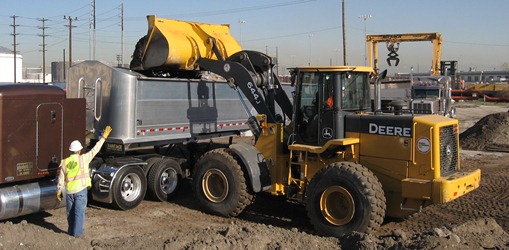Project Summary
After a marine terminal was demolished, several site assessments revealed that soil and groundwater at the site were impacted with petroleum hydrocarbons and lead. The State of California (the regulator) ordered actions to stop light non-aqueous phase liquid (LNAPL) from leaking from the groundwater at the site into the harbor. An Interim Remedial Action Plan (IRAP), a Remedial Action Plan (RAP), and a Sampling and Analysis Plan (SAP) were prepared and implemented to protect harbor water, and remediate the site.

Project Description
A waterfront property located in Southern California was the site of a former marine terminal and the soil and groundwater were impacted with petroleum hydrocarbons, which included light non-aqueous phase liquid (LNAPL) floating on the groundwater. The LNAPL was leaking into the harbor at low tides, and the regulator ordered an interim remedial action plan (IRAP) to stop the formation of harbor sheen. The IRAP proposed the following: construction of an LNAPL recovery trench to stop migration of LNAPL into the harbor; skimming of the LNAPL; and offsite thermal treatment and disposal of excavated soil.
To comply with the cleanup and abatement order issued by the regulator, a remedial action plan (RAP) was prepared for the waterfront property. The RAP proposed three alternatives to meet cleanup goals at the site. The regulator approved a plan consisting of partial excavation, off-site thermal treatment of contaminated soil, skimming of LNAPL in excavation areas, enhanced in situ bioremediation of groundwater, and backfill of excavation areas with thermally treated soil.
In a RAP approval letter, the regulator ordered a sampling and analysis plan (SAP). The SAP identified the following: sampling and analysis methods to outline excavation areas, and areas targeted for in situ remediation; specified detailed methods to perform bench-scale tests and pilot-testing of bioremediation technologies; proposed sampling and analysis methods to characterize soil and groundwater during remediation; and outlined the quality control procedures that applied to all soils shipped to and from the thermal treatment facility for recycling at the site.
After the regulator approved the RAP, detailed technical specifications and design drawings were prepared. The documents were prepared as part of a competitive bid process.